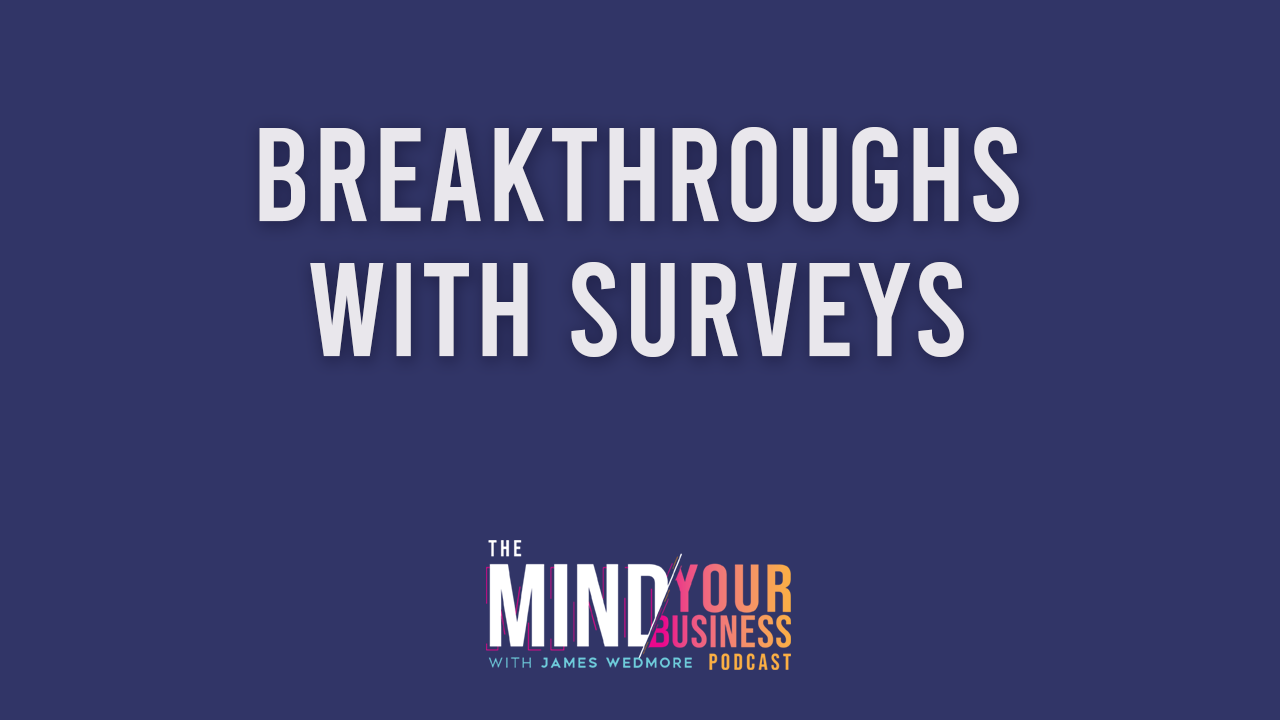Episode 76: Breakthroughs with Surveys

Are you marketing yourself online and feel like your message is falling flat? Maybe people aren’t getting your offer and you’re looking for a way to connect with your audience? On today’s show, James looks at how using surveys (the right way!) can lead to more effective messaging and more sales. He shares the right questions to ask, how to ask them so you’ll get people to actually fill out your survey, the software he recommends and most importantly, how to properly interpret the answers you receive.
Your online niche is most likely always evolving, and surveys are a powerful way to stay in touch with your marketplace.
When it comes to strategies to use with your surveys, Ryan Levesque has an excellent book, Ask. In his book, he talks about the “one question” survey, which simply proposes the following question:
When it comes to _________, what is the number one biggest struggle or frustration you have right now?
Your job is to get really specific on the topic when you ask this question. The more specific the phrasing is, the more specific answers you will receive.
When you give your audience specific instructions for completing the survey question, ask them to be as detailed as possible and try to deter one-word answers such as “time” or “money.”
By having this question by itself on a page, it’ll have the full attention of the reader. There are follow-up questions that James notes can be used effectively as well. If you ask for the person’s name, email and phone number, but make this optional. The people who do give you this information will be your more qualified prospects!
James’ six-question survey:
1. Have you ever tried _________? If no, why not?
Asking this will qualify the prospect, and the “why not” part gives you a list of the person’s objections.
2. What is the biggest obstacle or struggle that you are currently facing?
Here you are looking for the problem, or source of pain for him or her.
3. What are the negative consequences of this struggle?
By digging deeper, you will discover why it’s such a problem for them and what they are afraid will happen.
4. What is your ideal solution to this problem?
When this question is answered, they actually tell you what they’re looking for which is extremely valuable information for you to have!
5. What are the positive consequences and results of solving this problem?
This will tell you where they are heading, or what they are moving towards, in their own words.
6. If you had the chance to ask me one question, what would it be?
Towards the end of this podcast episode, James actually gives the one question that people ask him most often, as well as his answer…
You can use either the one-question survey, the six-question one or a combination of the both. It’s important though to only send whatever you decide to use to your own list or community. Asking another group of people to complete your survey might not lead to answers from your ideal client.
There are multiple software platforms you can use to create your surveys, including Google Forms, which is free. However, James’ recommends looking at Survey Monkey or Survey Funnel, which have more features and functions, as well as the ability to ask just one question per page.
How do you interpret all of the survey results? First, read them all. It helps to print them out and read the question each time out loud, followed by the answer. Better yet, you can have someone else read them to you. The important thing is not to judge the responses, and to just be present with the words. Someone might not be able to fully communicate what he or she is trying to say with just words, but you can still feel the energy or emotion behind the response.
It is helpful to tally the answers to see what’s the most popular problem that others are facing. James created a big poster board and explains how he used it to analyze the problems and possible solutions. Interpreting this information could lead you to your next offer, course, podcast episode, blog or email to your list!
Ultimately it’s not about the quantity of completed surveys received, it’s all about the quality of your interpretation and how you are able to use the information in your business.
LINKS:
Getting Started With Surveys – James’ Free PDF or text “survey” to 5202177548
Ask. by Ryan Levesque



